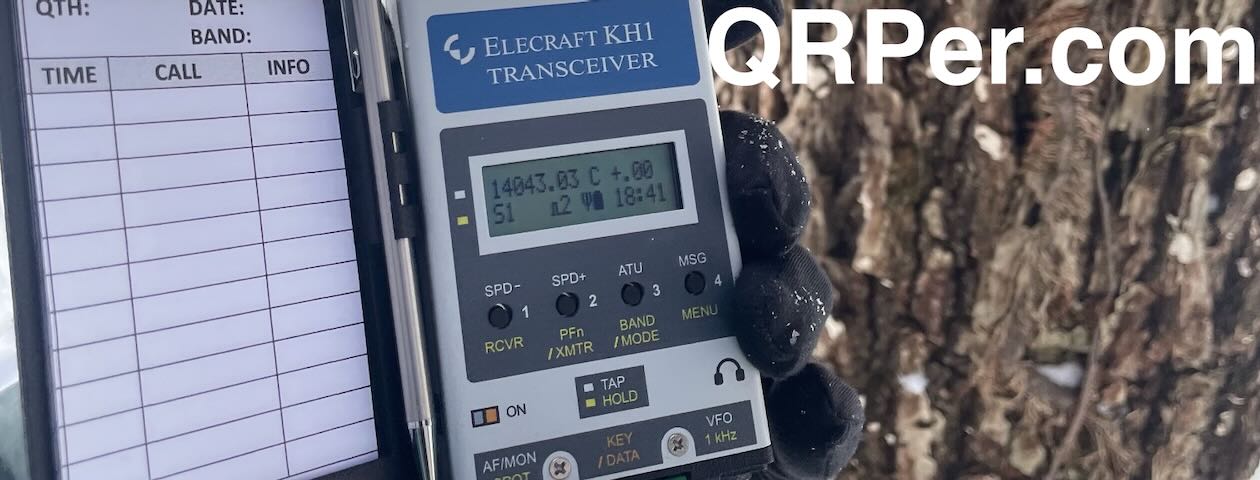Many thanks to Joshua (N5FY) who shares the following article about his KX1 portable field radio kit which will be featured on our Field Kit Gallery page. If you would like to share your field kit with the QRPer community, read this post.
N5FY’S Elecraft KX1 Minimal CW Kit
by Joshua (N5FY)
I started operating CW this past August and am having a blast! One great thing, or maybe its a bit of a problem for the budget, is that when you can work CW, there is a whole new world of HF radios to collect…I mean operate!
Not to mention the ability to pack out a small portable kit that can be thrown in a bag at the last minute when headed out the door. I have a few such kits but lacked a throw line for each. So, I picked up some more Arborist Throw Line from Atwood Rope Manufacture so I could finish out the first kit.
I just snagged a used, inoperable, KXPD1 paddle to complete my KX1 radio. I had to rebuild the jack on the key but did so in quick order and decided to make it out to my local park for a POTA activation. My plan was to finish up the kit with the throw line and then test out the new complete kit. Suffice to say, all went well!

The KX1, now out of production, has been a pleasure to operate CW with. This unit has the internal ATU option, 6xAA battery pack, and I updated the internals to add 80 and 30m. So this rig will run 20/30/40/80m.
There are 2 message memories, built in keyer, and even includes RF, AF, and bandwidth knobs for quick adjustment while operating. I’m no experienced CW operator, but this rig is hard to beat in my opinion. Then again, my KH1 hasn’t show up yet!

The antenna of choice here is my Tufteln 2 Wire No Transformer with a 41ft radiator and 17ft counterpoise. The internal ATU makes working 20, 30, and 40m simple and with no coax needed. I would use a much longer wire if I needed to work 80m. This antenna packs away very nice and not needing the Coax is a space saver. I have one version or another of my QRP antennas in each of my radio kits!

Packing a kit with no room to spare is almost like playing Tetris. I have a good bit of gear from Go Ruck, its all fantastic. For this kit, the 3L would leave a bit more space for some additional gear. If you are looking for some pockets as well, I like the GR2 Field Pocket. For this KX1 though, with the cover installed, I happed to forgo the bit of extra protection for the lightweight small size.

- Go Ruck Shadow Pocket 2L
- Elecraft KX1 with KXPD1 Paddle, Power cable, Headphones
- Tufteln 2 Wire no Transformer Antenna, 41ft Radiator, 17ft CP
- Tufteln KX1 Cover
- Tufteln 3.5Ah LiPo Battery
- Atwood Rope Manufacturer Arborist Throw Line
- Weaver throw Weight 8oz/10oz
- Moleskin Small notebook
- Uni KURU TOGA 0.5mm Pencil
Next Kit to finish up is the KX2 and TX-500. Both just lack the throw line.
Joshua N5FY, 72



























































